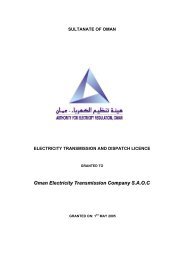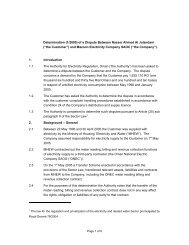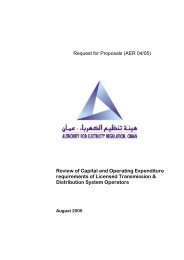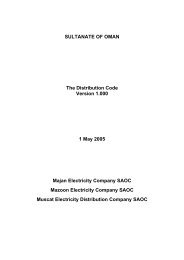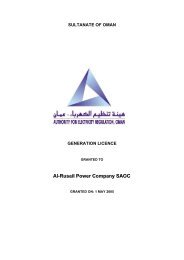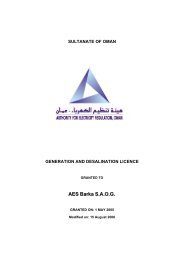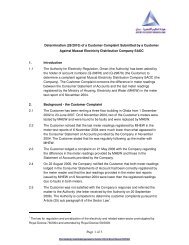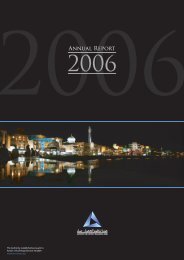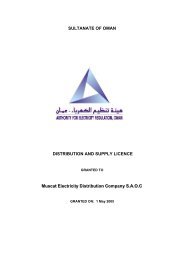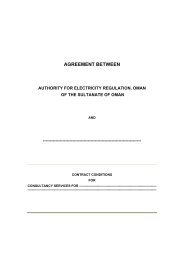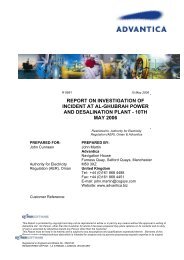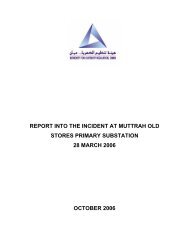Review Incident Shin.. - authority for electricity regulation, oman
Review Incident Shin.. - authority for electricity regulation, oman
Review Incident Shin.. - authority for electricity regulation, oman
Create successful ePaper yourself
Turn your PDF publications into a flip-book with our unique Google optimized e-Paper software.
5. CONCLUSIONS<br />
Based on the review described in the previous chapters we conclude that the duration of<br />
the outage was influenced by a number of factors:<br />
The first and most important factor is that the supply to the <strong>Shin</strong>as area is not (n-1) compliant.<br />
If the supply had been (n-1) compliant the permanent trip of a single circuit would not<br />
have led to any supply losses <strong>for</strong> customers. Although the network should have been redundant<br />
according to the standards in Oman and international best practice, the process is<br />
well underway with the project to provide this redundancy in the tendering phase.<br />
Since it was recognized by OETC that the line was not (n-1) compliant and because a line<br />
fault is not uncommon, we would expect proper preparation including a comprehensive<br />
plan <strong>for</strong> a line fault in the Wadi Jizzi – <strong>Shin</strong>as line.<br />
With respect to this preparation, fault distance indicators installed at the Wadi Jizzi grid<br />
station could have reduced the time <strong>for</strong> locating the fault location (2.5 hours) significantly.<br />
Since spare parts were only completely available about 14 hours after the materials that<br />
were needed <strong>for</strong> repair of the line were identified, we conclude that spare parts were not<br />
available or not available on a limited distance to the line. Having relevant spare parts<br />
available would have reduced this time of 14 hours significantly.<br />
Since we have only seen an expired maintenance contract, we are unable to confirm that a<br />
maintenance contract <strong>for</strong> the Wadi Jizzi – <strong>Shin</strong>as line was in place at the time of the incident.<br />
We found some issues which did not influence the duration of the outage significantly but<br />
could also be improved. Firstly, we found that OETC relied on the assistance of other parties,<br />
e.g. a team from MJEC assisted the line patrol team on an ad-hoc basis. Plans <strong>for</strong> incidents<br />
of this type should include <strong>for</strong>mal arrangements <strong>for</strong> assistance from third parties.<br />
The organization of the emergency organization was ad-hoc. We do suggest developing<br />
and using clear procedures <strong>for</strong> organizations of emergency situations as proposed by<br />
the Contingency Planning Code. This includes system normalization procedures and system<br />
incident procedures. Moreover, it includes the establishment of an incident center, a<br />
communication plan and the organization of the restoration and repair, including the<br />
role and workload of the operation engineer and coordination of the outage. Finally, we do<br />
<strong>Review</strong> <strong>Incident</strong> <strong>Shin</strong>as August 2007 19 09.10.2007<br />
vs. 2 (final)



